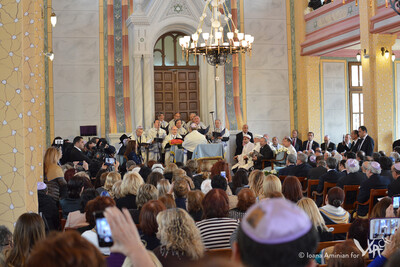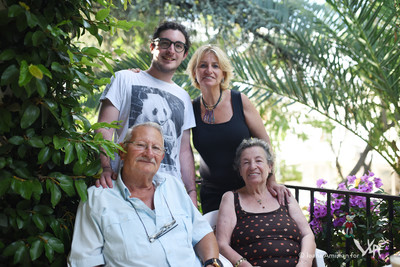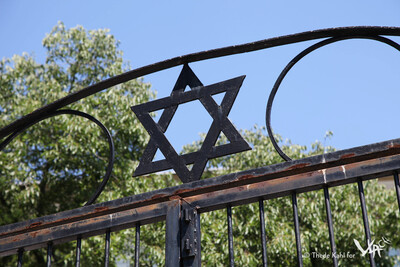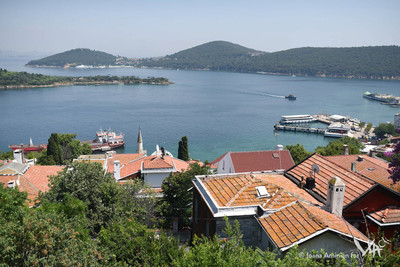
GLOTTOCODE: LADI1251, ISO 639/3: LAD
Judeo-Spanish is a vanishing language with an estimated number of speakers believed to lie somewhere between 133,016 (Ethnologue, April 2019) and 400,000 (Hetzer 2004: 237), although the actual number of speakers could be as low as 11,000 (Harris 2011: 58) worldwide. One of the possible reasons for this wild fluctuation could be the fact that these figures are based on estimations rather than more specific linguistic criteria that define speakers’ exact language profiles. There are no studies in Istanbul today that document the exact number and profile of Judeo-Spanish speakers. Today, there are fewer than 17,000 Sephardic Jews estimated to live in Turkey, which nevertheless represents the largest Sephardic community in Europe. The centre of Jewish life is in Istanbul, but there is also a significant Jewish population in Izmir as well as other small Jewish communities in Adana, Ankara, Bursa, Çanakkale, Iskenderun, and Kırklareli. As such, Turkey is the country in which Sephardic culture and language remain at their most prevalent, although the immigration to Israel is experiencing historical highs, with around 500 applications in both 2017 and 2018.
More to document than expected
Today, there are no recorded monolingual speakers of Judeo-Spanish and those whose command of the language is considered excellent are all over the age of 60 (cf. Harris 2011: 52). The birth date of the last remaining native speakers recorded in this project is around 1945...


read more...
... When we started our investigation after reviewing the existing literature, we expected to encounter only a handful of proficient Judeo-Spanish speakers. To our surprise, it was not a great challenge to find people fluent in Judeo-Spanish, even among those who were not actively involved in the upkeep of the language or employed in language preservation activities.
Documented areas and selection process
The documentation of Judeo-Spanish in Istanbul is part of a PhD project with the title Language Shift and Identity among the Sephardim in Turkey and Kalmyk in Russia, which is being carried out by Ioana Aminian Jazi at the Department for Romance Studies, University of Vienna. Therefore, the areas covered are partly influenced by the design of the broader research project.
These areas include topics like attitudes towards the language, the prestige associated to the language, the history of Sephardic migration, episodes of language suppression like the “Vatanaș Türkçe konuş!“ campaign, language and identity, language and religion, language transmission, aspects of daily life in both the past and present, Sephardic music, Sephardic cuisine. In addition, the research encompasses anecdotes related to language use, code-switching, relates regarding the Turkish-Jewish interethnic relationship, mixed marriages, and community rituals and practices.
The greater part of the documentation was designed to be partially guided in-depth interviews. The speakers would often elaborate upon longer stories about the certain topic under discussion. These chapters are mostly free of interventions from the interviewer, or, only when necessary, minimally guided by her.
The total volume of raw multimedia (audio/video) data amounts to more 45 hours and was collected between 2014 and 2017. A total amount of 50 fully annotated videoclip sections ranging between 5 to 20 minutes have been selected for publication within the IRDICH project.
Speaker's profiles
In this documentation project, the speaker's profile incorporates a range of different types of speakers including:
- old fluent speakers and new fluent speakers who learned the language at a later age;
- semi-speakers with different levels of proficiency, ranging from strong, nearly fluent to weak;
- ghost speakers who deny being able to speak Judeo-Spanish due to negative attitudes towards the heritage language, fear, language traumas, and so forth, but whose knowledge could be attested and documented in the course of the research and after several meetings.
We were motivated in our selection in giving a broad picture of the actual state of the language as spoken by its community members, irrespective of what is considered to be a model fluent speaker. Fluency is regarded here as a continuum on the scale of language shift towards Turkish. In order to be able to observe this continuum, the intergenerational mother-tongue transmission within the family, three generations of speakers, semi-speakers and non-speakers were selected from the same family. For the purpose of the present documentation, in most cases, only two generations of speakers from the same family were selected, as seen in the pictures above.
The family affiliation will be notified in the metadata of each transcription document for every videoclip.
Collaborators
This documentation project would have never been possible without the help of the community member, Deyvi Papo, who has given us the confidence of his multilingual insight (L1 Turkish) where our language knowledge reached its limits and the voluntary support of Imane Sghiouar (L1 French), University Assistant at the University of Vienna who, with her scrutinizing look and language skills helped us improve.
© Ioana Aminian, 2019-2020












